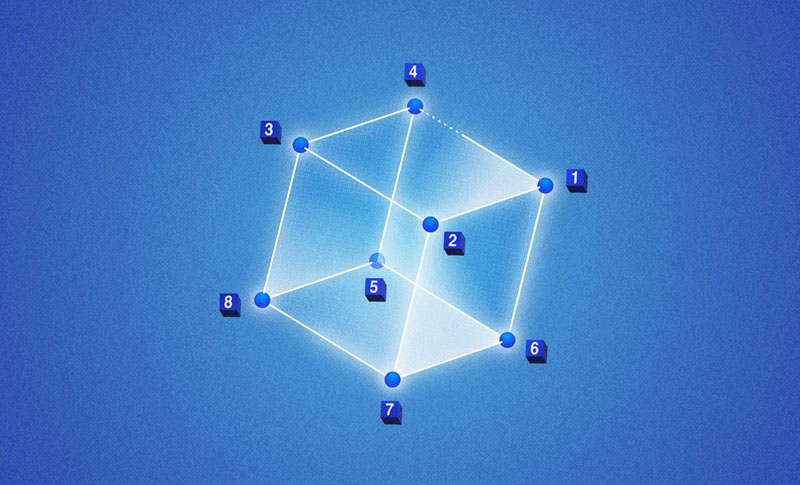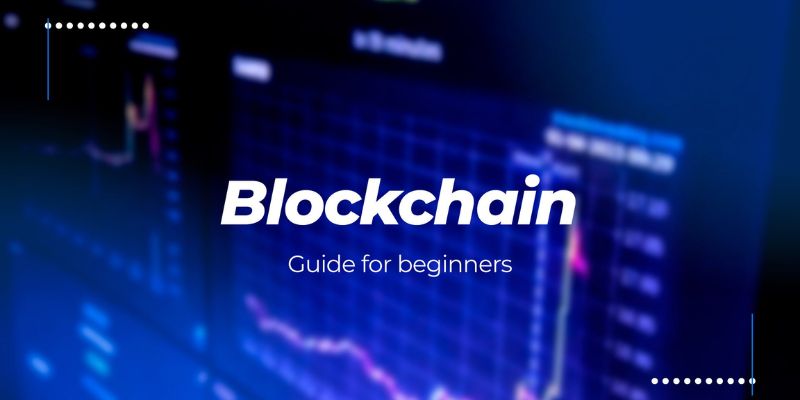Blockchain for beginners doesn’t have to be a riddle wrapped in mystery. Imagine a web so strong, it spreads across the globe, linking computers. This web has a superpower—trust baked right into it. We call it blockchain, a name that rings bells but often leaves heads scratching. I’m here, not just to demystify it, but to hand you the keys to decode this trailblazing tech. Ready to dive in? First, we’ll break down its bones, the very basics. Then you’ll see how it ticks, why it’s safe, and where it’s heading. Whether you’re eyeing investments or just curious, stick with me. It’s time to peel back the layers of blockchain. Let’s unlock this digital enigma together.
Understanding the Basics of Blockchain Technology
Exploring Blockchain Technology Explained
Blockchain is like a digital book that stores information. Think of it as a diary that many copies exist across the world. No one can change past entries because others would notice. Instead, everyone adds new information together. It’s safe because it’s hard to trick everyone at once. That’s the heart of blockchain technology explained in a nutshell.
Now, how does blockchain work? First, understand it’s a list of records. We call these records ‘blocks’. They link together in a chain. Hence, we have “blockchain.” Every block contains a special code that relates to the previous block. This code is a ‘hash’. It’s like a fingerprint. No two are the same. So, if one block changes, its hash changes too.
Let’s talk trust. You may wonder, can we trust blockchain? Yes, because it’s built on trustless principles. That means you don’t need to trust a single person. You trust the system. It’s open and clear to all. So, you can check it yourself. That’s the beauty of blockchain transparency.
Grasping the Fundamentals of Blockchain Basics
Understanding blockchain starts with knowing it’s a peer-to-peer system. People connect directly with each other. No banks or bosses in the middle. Imagine kids trading cards directly. That’s what we mean by peer-to-peer.
In a blockchain, every computer, or ‘node’, holds the blockchain’s complete history. These nodes talk to each other. They make sure all copies match. When someone wants to add to the blockchain, nodes check the new info. This is the blockchain validation process. All nodes must agree—this is called ‘consensus’. Then the change happens everywhere at once.
Now, blockchain is about more than just Bitcoin for novices or cryptocurrency. It has many uses. Want to prove you own something? Blockchain can help. That’s called ‘smart property’. You can even write rules for money to follow. That’s part of smart contracts introduction. It’s a contract that lives in the blockchain and works automatically.
Bitcoin and Ethereum are big names in blockchain. They show how types of blockchains differ. Bitcoin focuses on money without banks. Ethereum lets people run any program on its blockchain – that’s the Ethereum platform basics.
Why does this matter? Because blockchain allows new ways to interact online. It cuts out middlemen. And it gives control back to the people. It can be complex, but getting the blockchain basics helps you see why many get excited.
In summation, blockchain is a novel way to share and store info. It’s secure and honest. And it could change how we do many things in the future. So, keep your minds open and ready to learn more about blockchain applications and how they will shape the world we know.
Deciphering How Blockchain Operates
Unveiling the Mechanisms of Distributed Ledger Technology
Think of blockchain as a book. Each page in the book is a block. Every page tells of trades, who sent what, and who got what. This book is not in just one place. Everyone has a copy. This makes it hard to cheat. If you change one page in your book, the other books will not match. When all books match, we know the info is right.
These books form a distributed ledger. This means records spread across many places. Think of this like a shared Google Document, but way more secure. Everyone can see the changes made. You can’t just erase or change past info. Once it’s in the book, it stays.
When someone wants to add a new page to the book, we must all agree. We do this with a consensus mechanism. It’s like if a whole class had to say “yes” before a decision is made. This keeps our book honest.
Comprehending Cryptocurrency Fundamentals and Transactions
Cryptocurrency is digital money that lives on blockchain. Imagine having a special key that lets you unlock your digital money.
When you want to send cryptocurrency, you announce to everyone. You say, “I am sending this to my friend.” Your special key proves it’s really you. The transaction is now a new page waiting to be added to the book.
Now, remember the class vote? Here comes a game called mining. Some people use their computers to solve hard math puzzles. The first one to solve it gets to add the new page to the book. We call this proof of work. It stops people from trying to cheat because they’d have to outsmart everyone’s computers at once!
But there’s another way, called proof of stake. This game is not about puzzles. It’s about how much cryptocurrency you hold. If you have more, you have a better chance to add pages. But if you try to cheat, you lose some of your hold. This makes you think twice before being dishonest.
Blockchain tech keeps your cryptocurrency safe. When you hear Bitcoin for novices, it’s just one type of cryptocurrency using this tech. Ethereum platform basics show us a world beyond money, like apps that run on the blockchain.
We use hashing to turn transaction info into a jumble of letters and numbers. This also keeps our book safe. It’s like a secret code that only makes sense if you have all the pieces from before.
Now you might think, can we trust blockchain? Since everyone checks everyone else, you can trust the system as a whole even if you don’t trust one person.
Remember, blockchain is more than money. There are apps, games, ways to prove you own something, all built on this amazing book of pages. And those keys? Keep yours safe. Don’t share them. They’re like the key to your secret diary.
Blockchain is exciting. It’s changing how we think of money, business, even art! Every day people come up with new pages for our book. And we, the crypto-kids, get to write history, one block at a time.
Deep Dive into Blockchain’s Core Features
Introduction to Smart Contracts and Their Functions
Smart contracts are like super-smart rules. They make deals go smoothly in blockchain without anyone needing to check them. When two people want to make a deal, they use a smart contract. This is a special code on the blockchain. It helps them exchange money, shares, or anything valuable in a clear, conflict-free way without the need for a middle person.
Let’s say you want to buy a song online. With a smart contract, you pay the songwriter. The song comes to you automatically after the payment. If this does not happen, the deal stops, and your money comes back to you. This is possible because the smart contract has all terms of the deal between you and the songwriter in its code.
These contracts run on the blockchain, so they are safe and can’t be changed. Each smart contract has a unique address on the blockchain. Anyone can see it operating in real-time. Think of it like a tamper-proof vault that automatically opens when the right code is entered.
The Importance of Blockchain Security Features and Transparency
Blockchain’s security is a big deal. It’s like having a lock that can’t be picked. This security comes from features like its distributed nature and consensus mechanisms. In a blockchain, many computers work together. Each one holds a copy of all transactions. This means if someone tries to mess with one, the others will spot it right away.
Also, before a transaction is final, most computers in the network must agree it’s legit. This is called consensus. Different blockchains use different rules for this. Bitcoin uses a method called Proof of Work, where miners solve tough puzzles to add a block to the chain. Other blockchains might use Proof of Stake, where the more coins you have, the more power you get to confirm transactions.
Plus, everything that happens is there for all to see—this is transparency. Each step of the deal is recorded. Everyone can look at it, but they can’t change it. Once info is added to a blockchain, it’s like writing with a permanent marker on the internet.
One more thing is the use of complex math called cryptography. It secures the data with unique keys. Think of these like hidden messages that can only be read using a secret code. This means only the people involved can see the details. Others just see the action happened.
Together, these features make sure no one cheats and everyone trusts the blockchain. It’s like a game where the rules are part of the game board itself. They ensure fair play for all. So, even if you are new to this, these blockchain basics are here to keep your stuff safe and sound.
Real-World Applications and Future of Blockchain
Investment Insights: Cryptocurrencies and Blockchain Innovations
Investing in cryptocurrencies is like planting a seed and watching it grow. Every day, money gets digital. We see it in apps on our phones. Blockchain is the tech behind digital money, like Bitcoin. It’s a list of records, like pages in a book. Each page is a block. Blocks are tied together in a chain. Think of it as a string of pearls. This string is safe because it’s hard to change.
Kids play “telephone,” where they whisper a message around a circle. Blockchain is like “telephone” but super secure. If one kid changes the message, everyone knows. That’s how blockchain keeps money safe. Everyone using it helps check that no one cheats. It’s like having a super honest buddy guard your piggy bank.
Someone says, “I have 10 bitcoins.” Blockchain checks if it’s true. It asks all its friends (computers), “Is this right?” They all agree, “Yes!” or “No!” This is called consensus. Everyone must say yes for it to be true. It’s like asking the whole class if you really did your homework.
Bitcoin is the first use of blockchain. It’s digital gold. You can’t hold it but you can own it. It’s made by mining, but not in the ground. Computers solve puzzles to find bitcoin, kind of like a digital treasure hunt. There are other digital monies too. Ethereum lets people make deals without a middleman. It’s like swapping stickers directly with friends, but for grown-ups and more important things.
Blockchain is not just money. It’s more! It’s a super smart way to keep data. This data can be for anything. It can track food from the farm to the store. It can help artists sell their music directly. It can even help you own a piece of a game or art, called an NFT. Imagine if you could own a piece of your favorite video game character. With blockchain, you can!
The future is exciting for blockchain. More people and companies will use it. They’ll figure out new ways to use this tech. Maybe your future car or house will use blockchain. It’s like a LEGO set; the pieces can build many things. Keep your eyes open for the next big thing with blockchain.
Exploring Blockchain Applications and Use Cases across Industries
Blockchain is not only for tech whizzes. It’s for everyone, everywhere. It changes how we do things in almost all jobs. In medicine, it keeps our health records safe and private. Every doctor visit, every shot you get, blockchain can keep a record. It’s like a health diary that no one can peek into.
In music, artists can use blockchain to sell their songs straight to fans. Imagine buying a song from your favorite singer, right from them, no music store needed. Smart contracts do this. They’re like promises that keep themselves. You pay, you get the music, no one can stop it.
Even for farmers, blockchain helps. It can track food from the seed to the table. You can know where every apple or potato came from. It’s like a detective story for your salad, but you have all the clues.
In games, blockchain can make everything you find or earn really yours. Even when the game is off, you own what you won. It’s like saying, “This magic sword is really mine!” and the game agrees.
Blockchain is growing. It’s finding its way into schools, stores, and even art. It’s important to learn what this can do for you. There’s a world of blockchains out there, and it’s just getting started. Stay curious and keep exploring, because blockchain is here to stay.
In this post, we dove into the world of blockchain. We started by breaking down the basics to help you understand what blockchain is and how it works. We then unpacked how the technology operates, highlighting how it records transactions and keeps data safe. Next, we looked at smart contracts and why security and openness matter. We finished by checking out real-life uses and how blockchain might shape our future.
I hope you now see why so many people are excited about blockchain. It’s got a lot of ways it can be used, from money to making sure contracts work right without any mix-ups. We’re just scratching the surface of what blockchain can do. It’s clear that this tech will be a big deal for a long time. Keep an eye on it; blockchain will keep changing our world in ways we’re just starting to figure out. Thanks for sticking with me on this blockchain journey. Let’s watch where this road takes us!
Q&A :
What is blockchain technology and how does it work?
Blockchain technology is a digital ledger system that records transactions across a network of computers. Instead of being stored in one central point, it is distributed across multiple nodes to ensure transparency and security. Each ‘block’ in the blockchain contains a number of transactions, and every time a new transaction occurs on the blockchain, a record of that transaction is added to the ledger of every participant, creating a ‘chain’ of blocks – hence the name.
Why is blockchain important for beginners to understand?
Understanding blockchain is important for beginners because it’s a foundational technology that can disrupt many industries by introducing new ways of secure, decentralized transaction and data management. Being versed in blockchain principles opens up opportunities in various fields, from finance to supply chain management, and helps beginners appreciate the potential for innovation and new business models.
Can blockchain be hacked, and is it safe for beginners to use?
While blockchain is designed to be secure, no system is entirely hack-proof. The decentralized nature of blockchain makes it inherently resistant to the traditional forms of hacking that affect centralized databases. However, it is vital for beginners to understand the best security practices, like keeping private keys secure, to ensure the safety of their blockchain transactions.
What are the potential benefits of learning about blockchain for beginners?
Learning about blockchain offers beginners the chance to understand a rapidly advancing technology with vast implications. The potential benefits include increased job opportunities in tech, improved knowledge of cybersecurity, and a deeper understanding of how emerging technologies can be leveraged for problem-solving and innovation in various industries.
Are there specific industries where blockchain technology is particularly impactful?
Yes, blockchain technology is particularly impactful in industries that rely on secure and transparent transactions. Finance is one major sector, with cryptocurrencies and smart contracts changing how money is transferred and agreements are executed. Supply chain management is another, where blockchain improves traceability and accountability. Healthcare, real estate, and voting systems are also being transformed by blockchain applications due to its ability to securely store and share data.





RELATED POSTS
The Unique Characteristics of Blockchain Technology – A Guide to Its Power and Potential
The unique characteristics of blockchain...
Security of Consensus Mechanisms: Unlocking the Fort Knox of Blockchain Safety
Enhance Blockchain Security: Mitigating Consensus...
Examples Of Blockchain Use Cases Beyond Cryptocurrency: Surprising Uses
Discover 10+ examples of blockchain...
On-Chain Analysis Drawbacks: What Investors May Be Overlooking
Discover the disadvantages of on-chain...
What Are Crypto Derivatives? Mystery of Digital Trading Instruments
Demystifying Crypto Derivatives: Understanding Basics,...
Blockchain Prediction Market: Navigate the Future, Bet on Outcomes
Blockchain Prediction Market: Explore Decentralized...
How Companies Using Blockchain Technology Are Revolutionizing Operations
Curious about how “Companies Using...
Unveiling the Mystery: What Exactly is Coinhive Malware?
Understanding Coinhive malware and its...
Emerging Trends In Blockchain Technology: What’s Changing the Game in 2023?
Emerging trends in blockchain technology:...
Timeline of Blockchain Development: A Revolutionary Tech Journey
Timeline of blockchain development: From...
Keith Grossman: The journey from media to finTech
Discover the life and career...
Naoris Protocol Airdrop: Get free NAORIS Tokens
Naoris Protocol is an advanced...
Introduction to Blockchain Technology: Unlocking a Digital Revolution
Demystify blockchain technology, understand its...
Blockchain Simplified: Unlocking the Secrets Behind Digital Ledgers
"Demystifying Blockchain: An Introductory Guide...
Hot Wallet vs Cold Wallet: Which Secures Your Crypto Best?
Hot wallet and cold wallet:...
Enterprise Blockchain Emergence: Unlocking Top Security Requirements
Addressing specifics of #blockchain model...